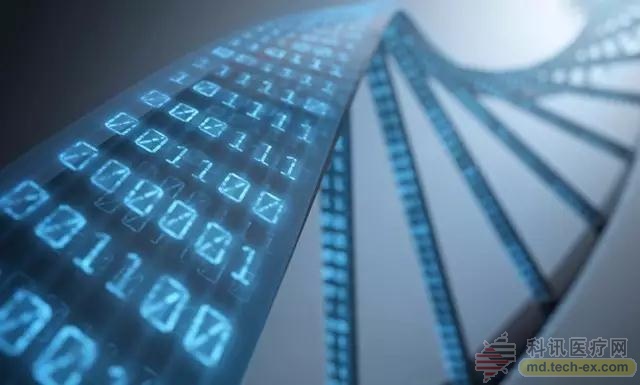Release date: 2017-03-06
DNA has the potential to provide large-capacity information storage. However, current methods can only use a small fraction of the theoretical maximum. The New York Genomic Center and Columbia University's Erlich and Zielinski proposed a strategy: the DNA Fountain, which is close to the theoretical maximum of information stored per nucleotide. They store the efficient encoding of the information into the DNA and still recover the file completely after multiple rounds of polymerase chain reaction. Related papers were published in the March 3rd issue of Science.

DNA is an attractive medium for storing digital information because it is compact and can last for hundreds of thousands of years if stored in a cool, dry place, as reflected in a 2016 Nature paper. Come out: Spanish scholars successfully sequenced the DNA partial sequence of 430,000 years ago. (The oldest human DNA sequencing reveals the secrets of Neanderthals)
Yaniv Erlich, a professor of computer science at Columbia University, said, "DNA doesn't degrade over time like tape and CD, and it won't be outdated."
Erlich and his colleague Nina Zielinski chose six file encodings to write DNA: a complete computer operating system, a 1895 French movie, a $50 Amazon gift card, a computer virus, a pioneer board with pictorial information and An old study led by information theorist Claude Shannon in 1948. These files total 2.14 × 10 6 bytes.
They compress these files into a main file and then split the data into short strings of binary code consisting of 1 and 0. Using a fault-tolerant algorithm called a fountain code, they randomly wrap the string into droplets and map 1 and 0 in each droplet to the four nucleotide bases in the DNA: A, G, C and T. The algorithm removes the letter combination of known errors and adds a barcode to each drop to help reassemble the file later.
All in all, they generated a list of 72,000 DNA strands, each with a length of 200 bases, and sent a text file to San Francisco's DNA synthesis company, Twist Bioscience, which specifically converts digital data into biological data. Two weeks later, they got a vial containing a string of DNA molecules.
To retrieve their files, they use modern sequencing techniques to read the DNA strand and then use software to translate the genetic code into binary. They recovered their files and there were no errors. In this short demo, Erlich opens his archive operating system on a virtual machine and plays the games of Minesweeper to celebrate.
They also demonstrated that by PCR amplification of stored DNA samples, an almost unlimited number of copies of the file can be produced, and after multiple copies, the technology can still recover the file data.
Researchers have shown that their coding strategy packs 215 Pascals of data on one gram of DNA, published by Harvard University's groundbreaking researcher George Church and European Bioinformatics Institute's Nick Goldman and Ewan Birney in Nature. 100 times the method.
“We believe this is by far the highest density data storage device,†says Erlich.
The capacity of DNA data storage is theoretically limited to two binary digits per nucleotide, but the biological constraints of DNA itself and the need to include redundant information to reassemble and read fragments reduce its capacity to each nucleotide. The base has 1.8 binary numbers.
The highlight of the study was the use of fountain codes. In coding theory, a fountain code is a type of erasure code that has the ability to generate a sequence of infinite coded symbols from a given set of source symbols, and ideally, only the size and source symbols are the same or A slightly larger arbitrary subset of coded symbols restores the source symbol. Using their DNA fountain technology, Erlich and Zielinski averaged 1.6 bits per base nucleotide. This is at least 60% more data than the previously published method and is close to the 1.8-bit limit.
This technology is an epoch-making storage technology with a focus on the future. It has the advantages of high efficiency, large storage capacity, long storage time, easy access and maintenance-free. However, given the cost of synthesizing DNA molecules and reading DNA data, it is still too expensive to use it to store information at this stage.
However, if low-quality molecules are produced, the price of DNA synthesis can be greatly reduced, and coding strategies such as DNA fountains can be used to repair molecular errors. With the development of technology, DNA storage technology is expected to enter the homes of ordinary people.
Reference materials:
1.DNA Fountain enables a robust and efficient storage architecture
2.As reliable as your hard drive? Maximizing DNA storage
3.Towards practical, high-capacity, low-maintenance information storage in synthesized DNA
4.Nuclear DNA sequences from the Middle Pleistocene Sima de los Huesos hominins
Source: Bio 360
YT-S350
Rechargeable Hearing Aid,BTE Hearing aid,analog Hearing aid
Shenzhen Sunshine Technology Co.,Ltd , https://www.shenzhenyatwin.com